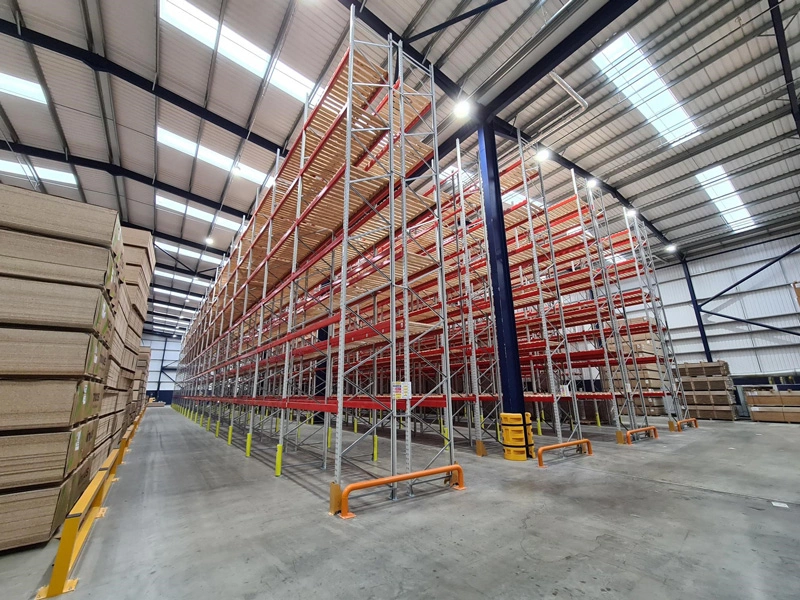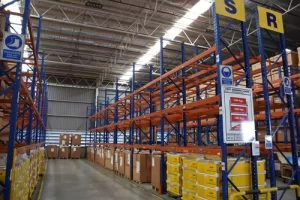
Six Indices That Your Warehouse Racking System Needs an Upgrade
The warehouses we utilize now date back to World War II. They developed into the industrial warehouses we use today from granaries and railroad depots. Due to huge manufacturing and the storage of war supplies during World War II, warehouse construction and expansion were significantly impacted.
Nearly 80 years after many businesses first entered foreign markets, their storage requirements have increased proportionately.
In order to increase productivity, accuracy, and speed, we can now track and analyze our warehouse systems as well as monitor and control the movement of goods.
Your racking system should last for many years with the proper maintenance, much like the majority of warehouse equipment. The stability of the structure can be impacted by corroded, dented, and uneven racks, cracked beams, and corrosion, resulting in ruined goods and dangerous circumstances.
Sometimes it is sufficient to simply fix your racking system when it begins to show symptoms of damage, but eventually it will need to be upgraded.
A few indicators that it’s time to update your warehouse racking system are listed below:
-
Constantly Repairing Racks
Do you frequently fix your racks? With time and repeated use, joints and components deteriorate. Damage to pallet racks is unavoidable, thus every warehouse will ultimately have to decide whether to upgrade or repair their racking system.
When the front or back has been harmed, and there is damage in several locations and at various heights, replace your rack. Invest in new racks since some common racking systems may be more expensive to fix than to replace.
-
Issues at Inspections
Do problems consistently surface throughout your inspections? Inspections of the racking system are necessary in the tough and unpredictable warehouse environments to lessen your legal risks and guarantee the safety of your staff.
Once or twice a year, the racking system should be checked to make sure it is in good working order. If you find more instances of damage during your routine inspections, your racking system may be deteriorating and getting older.
The extent of the issue determines whether to repair or replace. Do your reusable bulk containers also need to be changed, or are your racking systems the only ones that are defective? Use your bi-annual inspection to determine how to keep your warehouse operating as safely as possible.

Storage Equipment Expert
-
Difficulty Keeping Track of Inventory
Do you make an effort to stay current with inventory changes? The cornerstone of every effective warehouse is inventory management. It might be difficult to manage the constant flow of goods into and out of the warehouse as well as fluctuations in seasonal inventory.
One of the fundamental infrastructural components that supports a faultless operation are warehouse racking systems. You can manage your storage demands throughout the year with the right racking system.
The best warehouse racking solutions provide first-in-first-out procedures, particularly for perishable commodities, and enable simple and secure access to goods employing racking such as flow racks.
-
Not Enough Space
Do you have enough room left? You will probably require a new racking system when your warehouse is too small to accommodate inventory. Racking systems are designed to help warehouses organize their inventory effectively, make the best use of their available space, and provide simple access.
Instead of necessarily needing more racking structures, you might only require a modified racking method. Look for enhanced pallet shelving, such as stack racks, that will increase your storage density in the same amount of area.
-
Productivity Is Slowing Down
Has inventory started to rise as productivity has started to decline? If so, you might need to modify both the warehouse layout and your pallet racking setup.
Your ability to structure your business processes directly affects how productive your warehouse is. Improve the racking system. Making the most of your warehouse space while facilitating better access to a quickly changing inventory will both be possible with a well-organized racking system.


-
Moving to a New Facility
When you relocate to a new facility, upgrade your warehouse racking setup. Examine your new space plan and operations thoroughly. Operational efficiencies and quicker unloading, storing, and loading times could result from switching to a different kind of racking system.
It may be less expensive to purchase new racking systems than to relocate your current ones. Instead of attempting to modify the old racking system, pick a racking system that fits the size of the new facility.
Make sure to examine your storage options as well. To accommodate a new racking system, wooden pallet and container sizes might need to be changed.


0 comments
Write a comment